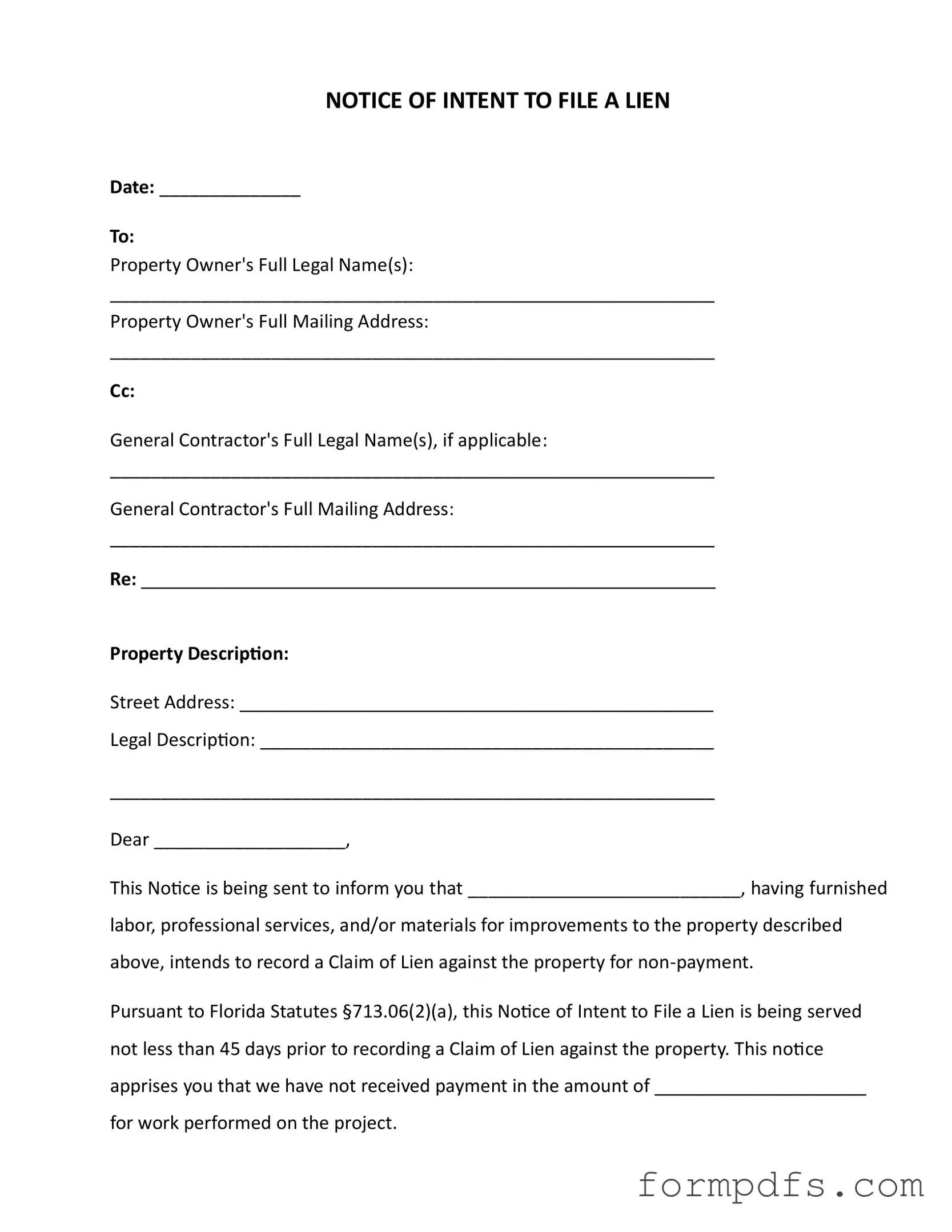What is the Intent to Lien Florida form?
The Intent to Lien Florida form is a legal document used to notify property owners that a contractor, subcontractor, or supplier intends to file a lien against their property due to non-payment for services or materials provided. This notice serves as a warning, giving the property owner a chance to settle any outstanding payments before a lien is officially recorded.
Who needs to file this form?
What are the consequences of ignoring this notice?
Ignoring the Intent to Lien notice can lead to serious consequences. If the property owner fails to respond or make payment within 30 days, the contractor or supplier may proceed to file a Claim of Lien against the property. This could result in foreclosure proceedings on the property, and the owner may become responsible for additional costs, including attorney fees and court expenses. It is crucial for property owners to take this notice seriously and respond promptly.
How much time does a property owner have to respond?
Property owners have 30 days from the date of receiving the Intent to Lien notice to respond. During this time, they should either make the necessary payment or communicate with the contractor or supplier to resolve the issue. Failing to take action within this timeframe could lead to the filing of a lien, which may complicate property ownership and financial responsibilities.
Can the lien be removed once it is filed?
Yes, a lien can be removed after it is filed, but it typically requires action from the property owner. The owner may need to pay the outstanding debt or negotiate a settlement with the contractor or supplier. In some cases, a legal process may be necessary to challenge or remove the lien if there are disputes about the validity of the claim. It is advisable to address the issue as soon as possible to avoid complications.
